Top 10 Best Indoor Pets For Kids
Having a pet join your family is one of the most rewarding, powerful and exciting things you can do. But it can also be very difficult. Having a pet is a big lifestyle change. Below, we’ll cover the basics of some of the most popular animals to have as pets for kids, debunk the myths and hopefully give you a little more insight into whether these animals are the right pet for you.Pets can be great sources of companionship and comfort.
1. Dogs

The domestic dog (Canis familiaris or Canis lupus familiaris)is a domesticated descendant of the wolf. The dog derived from an ancient, extinct wolf,and the modern grey wolf is the dog's nearest living relative.The dog was the first species to be domesticated,by hunter–gatherers over 15,000 years ago,before the development of agriculture.Their long association with humans has led dogs to be uniquely adapted to human behavior,leading to a large number of domestic individuals and the ability to thrive on a starch-rich diet that would be inadequate for other canids. The dog has been selectively bred over millennia for various behaviors, sensory capabilities, and physical attributes.Dog breeds vary widely in shape, size, and color. They perform many roles for humans, such as hunting, herding, pulling loads, protection, assisting police and the military, companionship, therapy, and aiding disabled people. This influence on human society has given them the sobriquet of "man's best friend."
2. Cats

The cat (Felis catus) is a domestic species of small carnivorous mammal.It is the only domesticated species in the family Felidae and is often referred to as the domestic cat to distinguish it from the wild members of the family.A cat can either be a house cat, a farm cat or a feral cat; the latter ranges freely and avoids human contact.Domestic cats are valued by humans for companionship and their ability to hunt rodents. About 60 cat breeds are recognized by various cat registries.
The cat is similar in anatomy to the other felid species: it has a strong flexible body, quick reflexes, sharp teeth and retractable claws adapted to killing small prey. Its night vision and sense of smell are well developed. Cat communication includes vocalizations like meowing, purring, trilling, hissing, growling and grunting as well as cat-specific body language. A predator that is most active at dawn and dusk (crepuscular), the cat is a solitary hunter but a social species. It can hear sounds too faint or too high in frequency for human ears, such as those made by mice and other small mammals.It secretes and perceives pheromones.
3. Hamsters
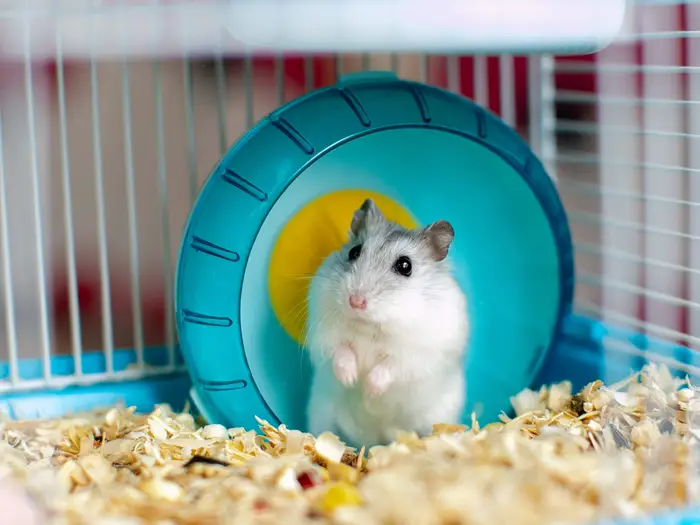
Hamsters are the most common first pet for children. Living to around 2 years, they’re another small mammal that are a great way to introduce caring for animals into your children’s lives. With a few different breeds, it’s best to go to a licensed supplier to make sure you know exactly what you’re buying. Some breeds are very sociable, but others prefer to live alone. Besides food and water, hamsters need plenty of bedding and nesting material. On top of that, they require cautious handling as they are very delicate, and are also nocturnal so that must be beared in mind.
4. Guinea Pigs
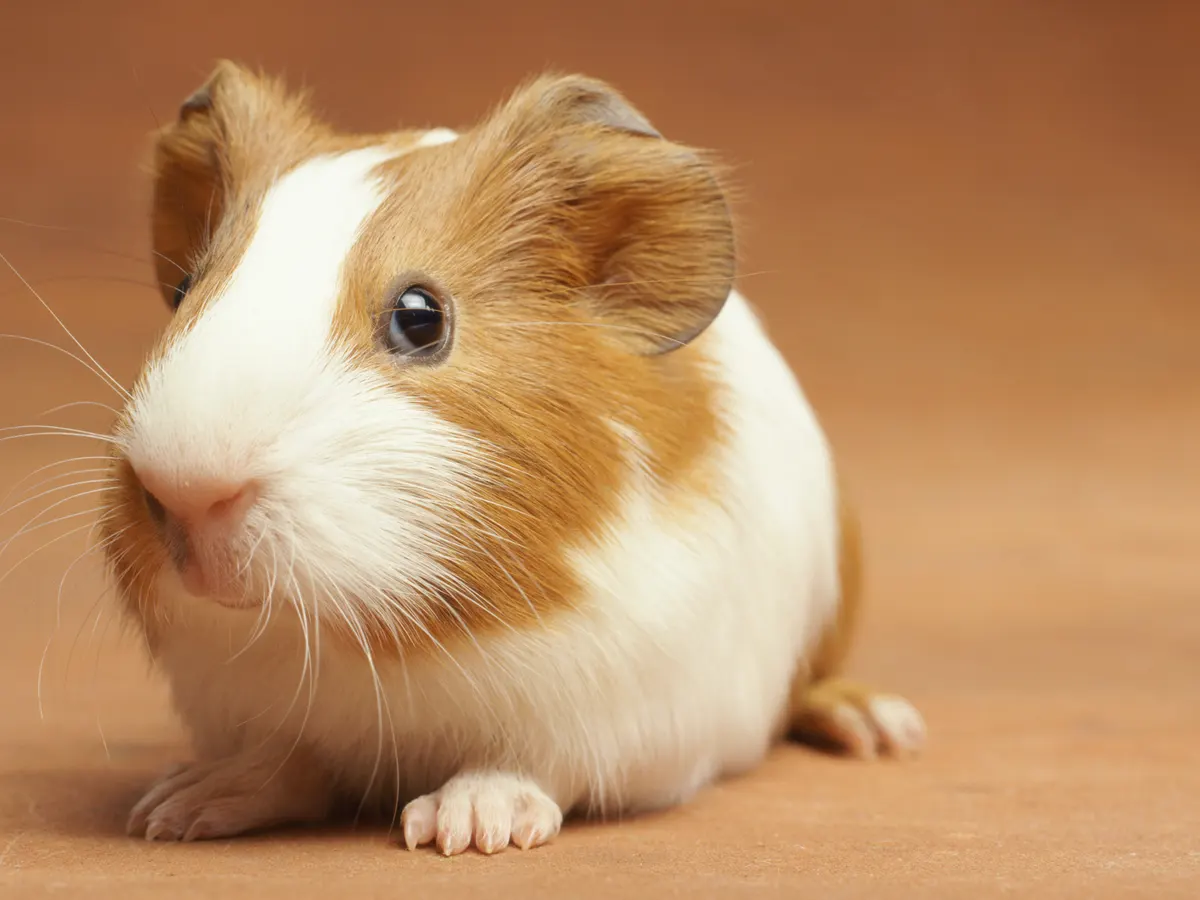
A descendant of the wild guinea pigs of South America, these cute little animals make the ideal low maintenance pet for kids. Again. It’s ideal to keep guinea pigs in pairs at least, as they are very sociable creatures. If your pair are of the opposite sex, it’s a good idea to get the male neutered – otherwise you going to have quite a crowd on your hand. With a decent sized hutch filled with food and bedding, plus regular playtime, guinea pigs are very rewarding pets. Guinea pigs live for around 4-8 years on average, so make sure your children are ready for the commitment.
5. Chinchilla
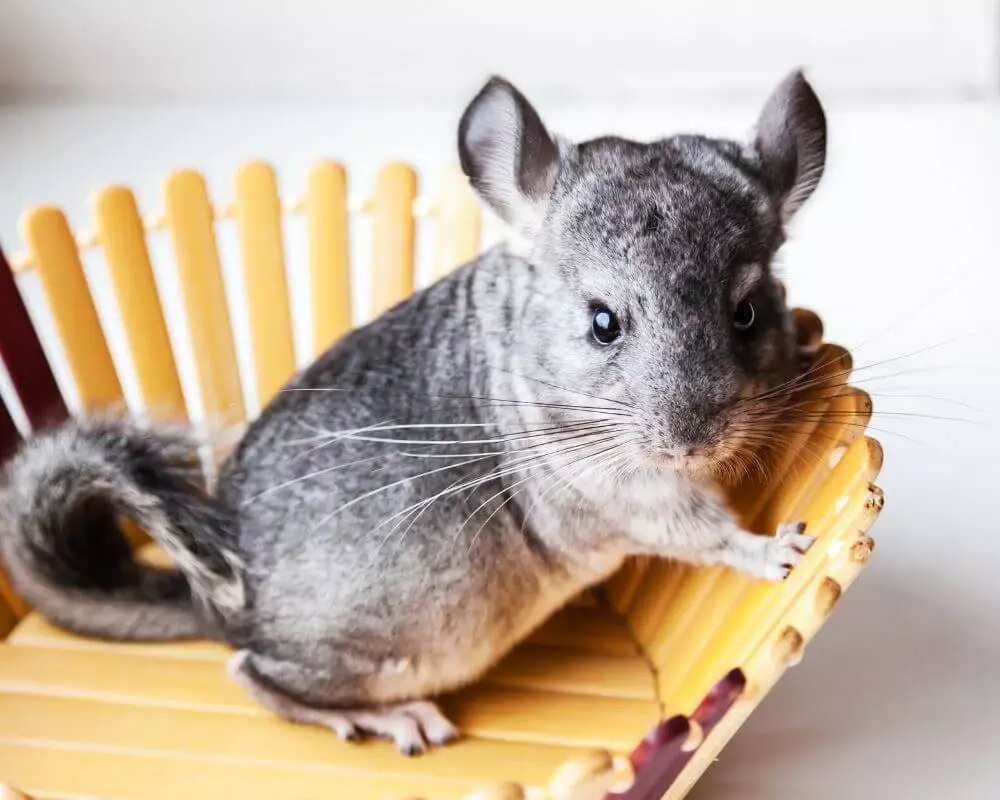
Chinchillas are either of two species (Chinchilla chinchilla and Chinchilla lanigera) of crepuscular rodents of the parvorder Caviomorpha. They are slightly larger and more robust than ground squirrels, and are native to the Andes mountains in South America.They live in colonies called "herds" at high elevations of up to 4,270 m (14,000 ft). Historically, chinchillas lived in an area that included parts of Bolivia, Peru, Argentina, and Chile, but today, colonies in the wild are known only in Chile.Along with their relatives, viscachas, they make up the family Chinchillidae. They are also related to the chinchilla rat.
The chinchilla has the densest fur of all mammals that live on land. In the water, the sea otter has a denser coat.The chinchilla is named after the Chincha people of the Andes, who once wore its dense, velvet-like fur.By the end of the 19th century, chinchillas had become quite rare after being hunted for their ultra-soft fur.Most chinchillas currently used by the fur industry for clothing and other accessories are farm-raised.Domestic chinchillas descended from C. lanigera are sometimes kept as pets, and may be considered a type of pocket pet.
6. Birds
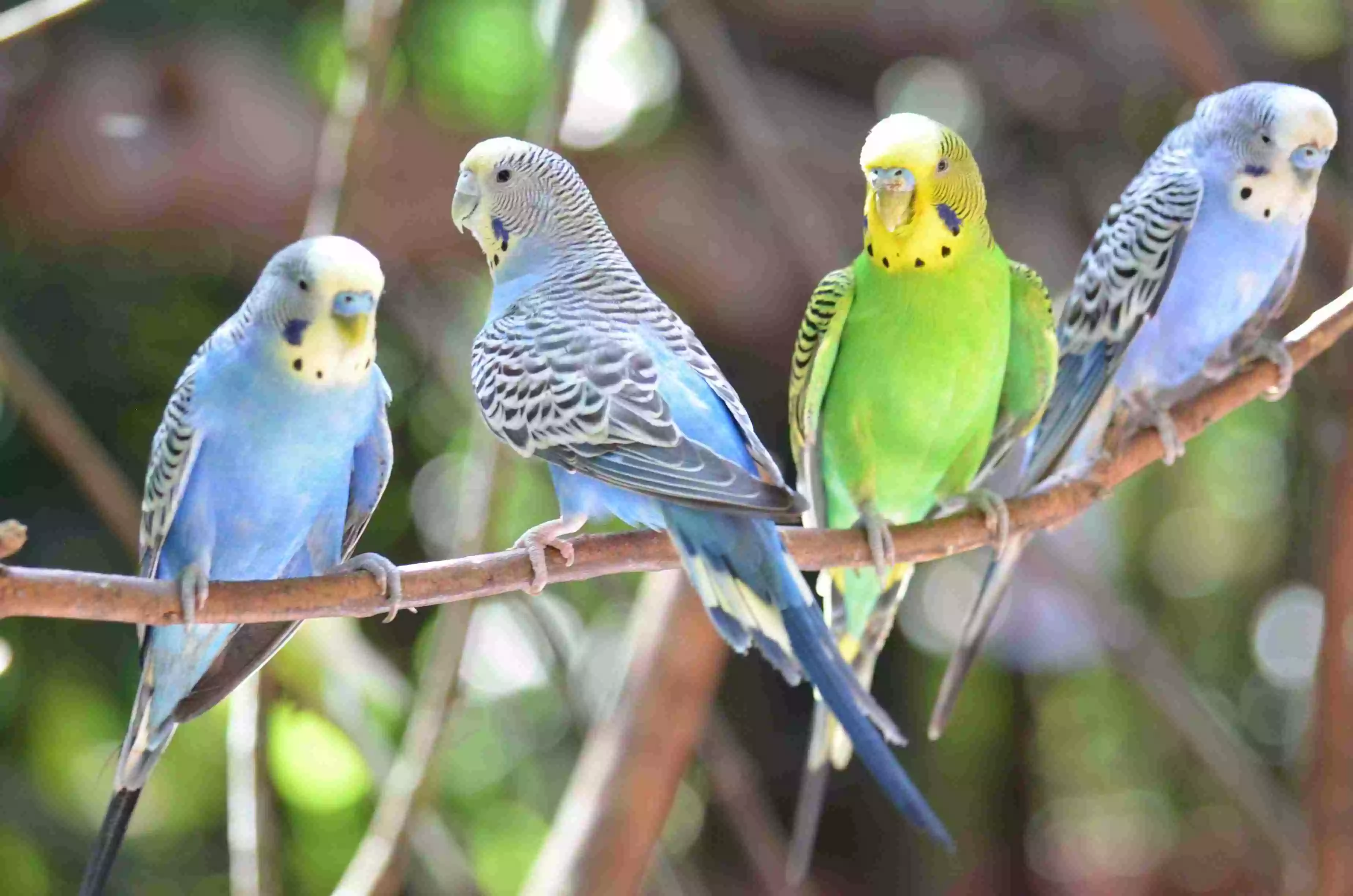
The budgerigar is a small, long-tailed, seed-eating parrot usually nicknamed the budgie, or in American English, the parakeet. Budgies are the only species in the genus Melopsittacus. Naturally, the species is green and yellow with black, scalloped markings on the nape, back, and wings. Budgies are bred in captivity with colouring of blues, whites, yellows, greys, and even with small crests. Juveniles and chicks are monomorphic, while adults are told apart by their cere colouring, and their behaviour.
The origin of the budgerigar's name is unclear. First recorded in 1805, budgerigars are popular pets around the world due to their small size, low cost, and ability to mimic human speech. They are the third most popular pet in the world, after the domesticated dog and cat.Budgies are nomadic flock parakeets that have been bred in captivity since the 19th century. In both captivity and the wild, budgerigars breed opportunistically and in pairs.
7. Hedgehogs

A hedgehog is a spiny mammal of the subfamily Erinaceinae, in the eulipotyphlan family Erinaceidae. There are seventeen species of hedgehog in five genera found throughout parts of Europe, Asia, and Africa, and in New Zealand by introduction. There are no hedgehogs native to Australia and no living species native to the Americas (the extinct genus Amphechinus was once present in North America).Hedgehogs share distant ancestry with shrews (family Soricidae), with gymnures possibly being the intermediate link, and they have changed little over the last fifteen million years.Like many of the first mammals, they have adapted to a nocturnal way of life.Their spiny protection resembles that of porcupines, which are rodents, and echidnas, a type of monotreme.
8. Sea Monkeys
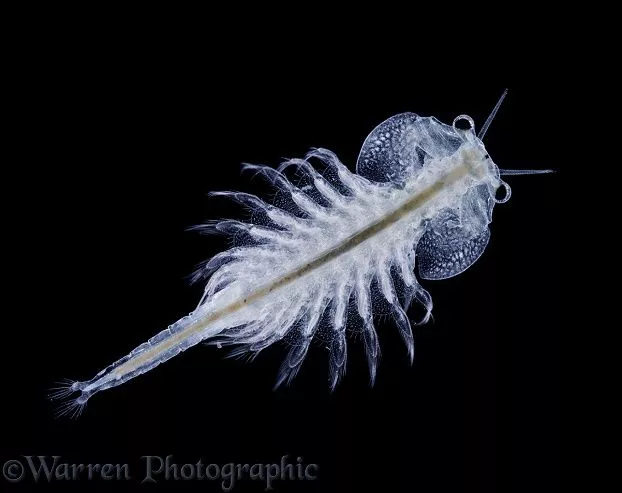
This might seem a little too low-maintenance for some but if you want to start off small, sea monkeys can be the ideal pets for kids. Great for youngsters between 2 and 5, you can have all the fun of watching these creatures but without quite so much hassle. Sea monkeys only need to be fed every 5 to 7 days, and if the water gets too cloudy you can reduce the amount of food you give them. Sea monkeys live for around 2 years – the ideal lifespan for small children that want a pet but that don’t firmly grasp what owning a pet entails.
9. Fish

Keeping fish as pets can range from the simple to the complicated, and as such are a great starter pet for kids: you can start off small and expand your aquarium or pond into a vibrant community of animals, that can form a lifelong passion for fish. We’d recommend you begin with a 20-gallon tank and start your collection with freshwater fish. Surprisingly, goldfish are ranked as fairly difficult to manage – they produce a lot of waste, need very regular cleaning and grow to enormous sizes. We recommend something like a barb fish, a zebrafish or maybe an angelfish. Once you’re kids are started, they’ll love nurturing their new fishy friends.
10. Rabits

Rabbits are a very popular starter pet for families. They’re a great way to introduce the joy of owning and looking after a pet to youngsters. Highly intelligent and very inquisitive, 1.5 million Brits own rabbits. Daily activities include feeding, cleaning, grooming and exercising – as well as playing with your rabbit, too. Both house and outdoor rabbits love to socialise, so if you only have the one, you’ll have to spend lots of time engaging with them. Because of this, it is recommended rabbits are kept in pairs. Besides these requirements though, rabbits can be left to their own devices, so make for great starter pets.
Having a pet join your family is one of the most rewarding, powerful and exciting things you can do. But it can also be very difficult. Having a pet is a big lifestyle change. Below, we’ll cover the basics of some of the most popular animals to have as pets for kids, debunk the myths and hopefully give you a little more insight into whether these animals are the right pet for you.Pets can be great sources of companionship and comfort.
1. Dogs

The domestic dog (Canis familiaris or Canis lupus familiaris)is a domesticated descendant of the wolf. The dog derived from an ancient, extinct wolf,and the modern grey wolf is the dog's nearest living relative.The dog was the first species to be domesticated,by hunter–gatherers over 15,000 years ago,before the development of agriculture.Their long association with humans has led dogs to be uniquely adapted to human behavior,leading to a large number of domestic individuals and the ability to thrive on a starch-rich diet that would be inadequate for other canids. The dog has been selectively bred over millennia for various behaviors, sensory capabilities, and physical attributes.Dog breeds vary widely in shape, size, and color. They perform many roles for humans, such as hunting, herding, pulling loads, protection, assisting police and the military, companionship, therapy, and aiding disabled people. This influence on human society has given them the sobriquet of "man's best friend."
2. Cats

The cat (Felis catus) is a domestic species of small carnivorous mammal.It is the only domesticated species in the family Felidae and is often referred to as the domestic cat to distinguish it from the wild members of the family.A cat can either be a house cat, a farm cat or a feral cat; the latter ranges freely and avoids human contact.Domestic cats are valued by humans for companionship and their ability to hunt rodents. About 60 cat breeds are recognized by various cat registries. The cat is similar in anatomy to the other felid species: it has a strong flexible body, quick reflexes, sharp teeth and retractable claws adapted to killing small prey. Its night vision and sense of smell are well developed. Cat communication includes vocalizations like meowing, purring, trilling, hissing, growling and grunting as well as cat-specific body language. A predator that is most active at dawn and dusk (crepuscular), the cat is a solitary hunter but a social species. It can hear sounds too faint or too high in frequency for human ears, such as those made by mice and other small mammals.It secretes and perceives pheromones.
3. Hamsters

Hamsters are the most common first pet for children. Living to around 2 years, they’re another small mammal that are a great way to introduce caring for animals into your children’s lives. With a few different breeds, it’s best to go to a licensed supplier to make sure you know exactly what you’re buying. Some breeds are very sociable, but others prefer to live alone. Besides food and water, hamsters need plenty of bedding and nesting material. On top of that, they require cautious handling as they are very delicate, and are also nocturnal so that must be beared in mind.
4. Guinea Pigs

A descendant of the wild guinea pigs of South America, these cute little animals make the ideal low maintenance pet for kids. Again. It’s ideal to keep guinea pigs in pairs at least, as they are very sociable creatures. If your pair are of the opposite sex, it’s a good idea to get the male neutered – otherwise you going to have quite a crowd on your hand. With a decent sized hutch filled with food and bedding, plus regular playtime, guinea pigs are very rewarding pets. Guinea pigs live for around 4-8 years on average, so make sure your children are ready for the commitment.
5. Chinchilla

Chinchillas are either of two species (Chinchilla chinchilla and Chinchilla lanigera) of crepuscular rodents of the parvorder Caviomorpha. They are slightly larger and more robust than ground squirrels, and are native to the Andes mountains in South America.They live in colonies called "herds" at high elevations of up to 4,270 m (14,000 ft). Historically, chinchillas lived in an area that included parts of Bolivia, Peru, Argentina, and Chile, but today, colonies in the wild are known only in Chile.Along with their relatives, viscachas, they make up the family Chinchillidae. They are also related to the chinchilla rat. The chinchilla has the densest fur of all mammals that live on land. In the water, the sea otter has a denser coat.The chinchilla is named after the Chincha people of the Andes, who once wore its dense, velvet-like fur.By the end of the 19th century, chinchillas had become quite rare after being hunted for their ultra-soft fur.Most chinchillas currently used by the fur industry for clothing and other accessories are farm-raised.Domestic chinchillas descended from C. lanigera are sometimes kept as pets, and may be considered a type of pocket pet.
6. Birds

The budgerigar is a small, long-tailed, seed-eating parrot usually nicknamed the budgie, or in American English, the parakeet. Budgies are the only species in the genus Melopsittacus. Naturally, the species is green and yellow with black, scalloped markings on the nape, back, and wings. Budgies are bred in captivity with colouring of blues, whites, yellows, greys, and even with small crests. Juveniles and chicks are monomorphic, while adults are told apart by their cere colouring, and their behaviour. The origin of the budgerigar's name is unclear. First recorded in 1805, budgerigars are popular pets around the world due to their small size, low cost, and ability to mimic human speech. They are the third most popular pet in the world, after the domesticated dog and cat.Budgies are nomadic flock parakeets that have been bred in captivity since the 19th century. In both captivity and the wild, budgerigars breed opportunistically and in pairs.
7. Hedgehogs

A hedgehog is a spiny mammal of the subfamily Erinaceinae, in the eulipotyphlan family Erinaceidae. There are seventeen species of hedgehog in five genera found throughout parts of Europe, Asia, and Africa, and in New Zealand by introduction. There are no hedgehogs native to Australia and no living species native to the Americas (the extinct genus Amphechinus was once present in North America).Hedgehogs share distant ancestry with shrews (family Soricidae), with gymnures possibly being the intermediate link, and they have changed little over the last fifteen million years.Like many of the first mammals, they have adapted to a nocturnal way of life.Their spiny protection resembles that of porcupines, which are rodents, and echidnas, a type of monotreme.
8. Sea Monkeys

This might seem a little too low-maintenance for some but if you want to start off small, sea monkeys can be the ideal pets for kids. Great for youngsters between 2 and 5, you can have all the fun of watching these creatures but without quite so much hassle. Sea monkeys only need to be fed every 5 to 7 days, and if the water gets too cloudy you can reduce the amount of food you give them. Sea monkeys live for around 2 years – the ideal lifespan for small children that want a pet but that don’t firmly grasp what owning a pet entails.
9. Fish

Keeping fish as pets can range from the simple to the complicated, and as such are a great starter pet for kids: you can start off small and expand your aquarium or pond into a vibrant community of animals, that can form a lifelong passion for fish. We’d recommend you begin with a 20-gallon tank and start your collection with freshwater fish. Surprisingly, goldfish are ranked as fairly difficult to manage – they produce a lot of waste, need very regular cleaning and grow to enormous sizes. We recommend something like a barb fish, a zebrafish or maybe an angelfish. Once you’re kids are started, they’ll love nurturing their new fishy friends.
10. Rabits

Rabbits are a very popular starter pet for families. They’re a great way to introduce the joy of owning and looking after a pet to youngsters. Highly intelligent and very inquisitive, 1.5 million Brits own rabbits. Daily activities include feeding, cleaning, grooming and exercising – as well as playing with your rabbit, too. Both house and outdoor rabbits love to socialise, so if you only have the one, you’ll have to spend lots of time engaging with them. Because of this, it is recommended rabbits are kept in pairs. Besides these requirements though, rabbits can be left to their own devices, so make for great starter pets.

























Login to your account or create a new account to post comments!